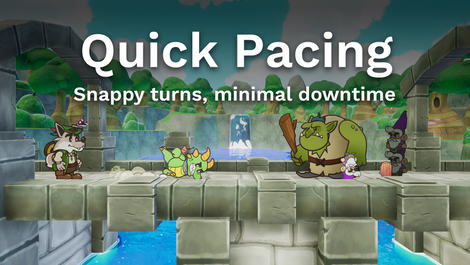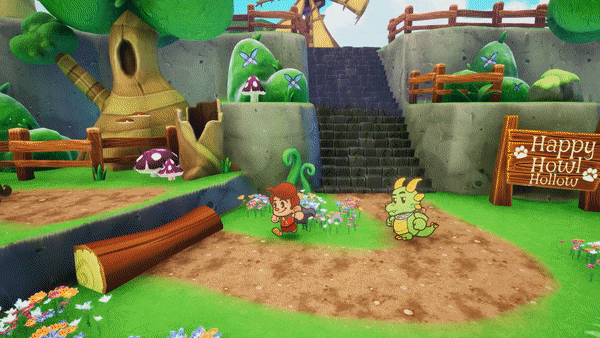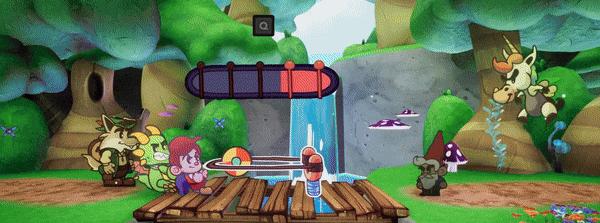The following work is from the video game Escape from Ever After, a startup indie project developed in Unreal Engine. I served as the game's Creative Director, Level Designer, Gameplay Designer, Writer, Composer, and more.

Escape from Ever After is a recipient
of an Epic MegaGrant
Reviewed Overwhelmingly Positive!

Combat & Encounter Design
Escape from Ever After is a turn-based RPG designed with the following core principles:

Quick Pacing
We knew early on that we wanted battles to feel fast-paced and to minimize the friction between player decisions and outcomes. To do this, we prioritized:
-
Small damage numbers reduce analysis paralysis and number crunching. Results are predictable and easy to understand.
- Snappy animations and shallow menus keep the gameplay moving. Within a second, you can select and perform a character's basic attack.
- Constant player input keeps player engagement high during what would otherwise be downtime in other turn-based RPGS.

Battles load quickly and bring you right into the action
Accessibility
Ensuring the game was easy to pick up and play was a core design goal. We focused on clear communication of information, avoiding reliance on prior knowledge of RPG systems. This was achieved by prioritizing:
-
Streamlined systems - no tacked on RPG mechanics for the sake of it. Every mechanic we ask the player to master is explored in-depth and iterated on through the entire game. All the extraneous noise was cut early on in the design process.
-
Many accessibility options, including automating player inputs in attacks or blocks, and various difficulty settings.
- Enemy status is conveyed visually and intuitively as much as possible, minimizing reliance on UI elements. (For example, an enemy carrying a big shield will block an attack from that direction. An enemy with a spike facing upwards should not be jumped on.)

Even when the action is quick, we try to keep the systems and UI intuitive.
Strategic Variety
Ensuring that battles never get stale, we constantly iterate on mechanics and enemy designs to force players to think outside the box and get creative.
-
Players are encouraged to use all 5 party members in battles through encounter designs that force limitations and difficult decisions. Party members can be swapped in/out for the cost of a turn in battle, or can be swapped instantaneously at the cost of a resource (Synergy Points).
-
Encounter designs often resemble puzzles, requiring spatial thinking. As new enemies are introduced, the decision-making process complicates without adding new rules.
Early-game examples showcasing emergent behavior from these mechanics:



